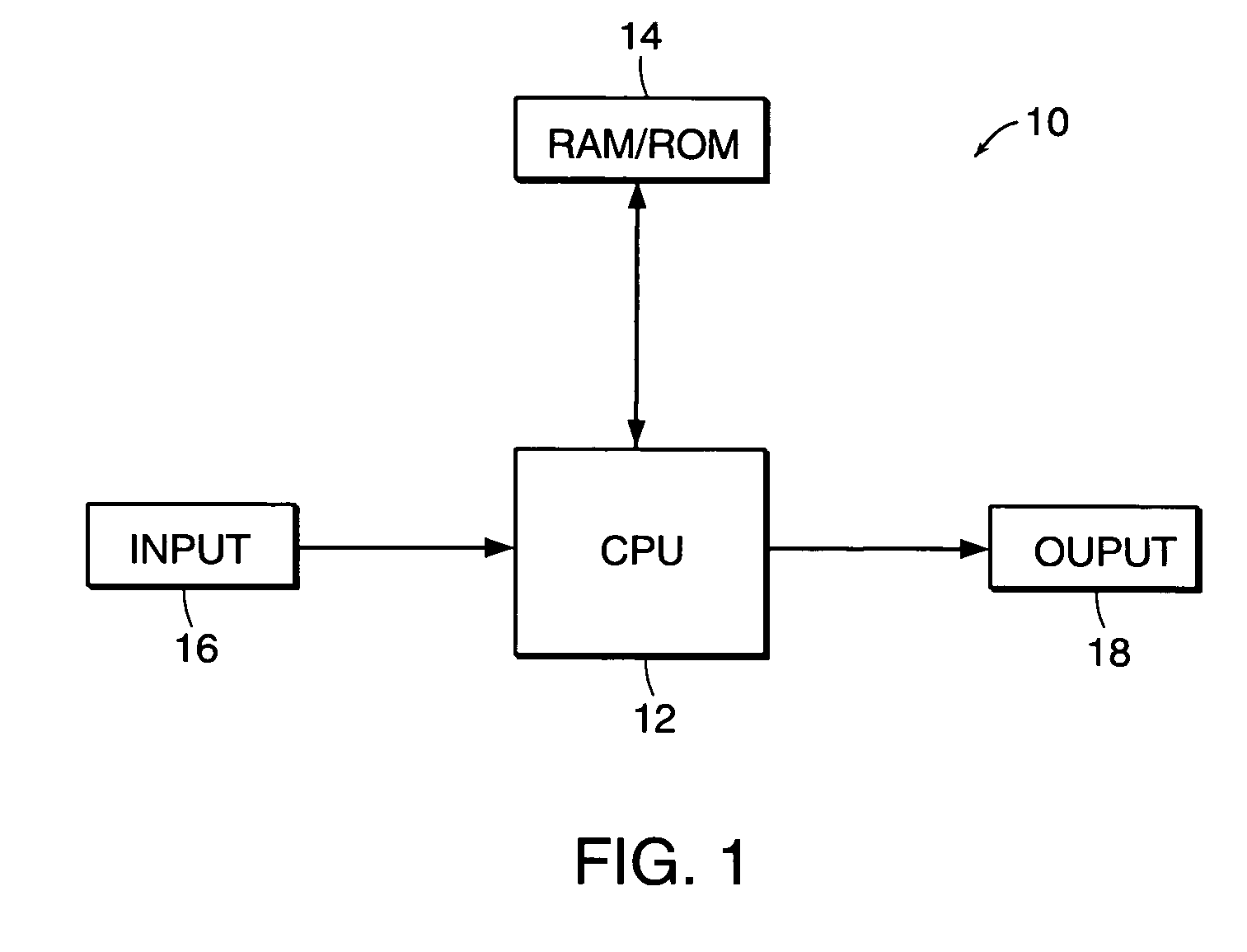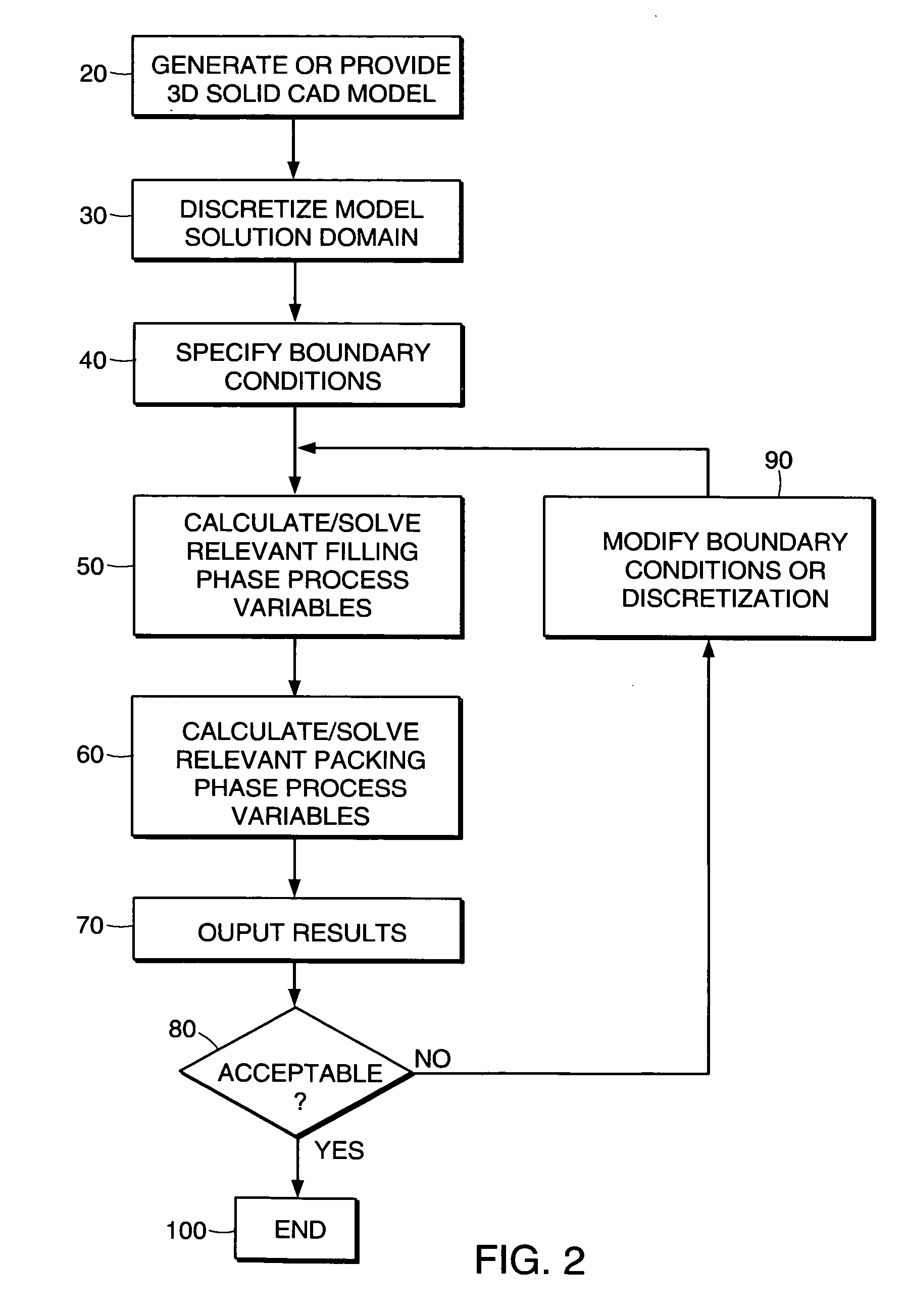Method and apparatus for modeling injection of a fluid in a mold cavity
a technology of injection molding and fluid flow, applied in the field of three-dimensional modeling of fluid flow in the cavity, can solve the problem that the accurate simulation of injection molding requires a typically non-isothermal analysis of the molten polymer, and achieve the effect of increasing the resolution
- Summary
- Abstract
- Description
- Claims
- Application Information
AI Technical Summary
Benefits of technology
Problems solved by technology
Method used
Image
Examples
Embodiment Construction
[0062] Modeling of the injection molding process in a three dimensional simulation can be described by the conservation equations for mass, momentum, and energy, respectively, as follows: ∂ρ∂t+∇·(ρ v→)=0(3)
where ρ is density, v is velocity, t is time, ∇ stands for the gradient with respect to a position vector, and → denotes a vector quantity. ρ(∂v→∂t+v→·∇v→)+∇·P=ρ g→(4)
where P is the momentum flux and g is the gravity force. ρ(∂U^∂t+v->·∇U^)+P:D+∇·q->=ρ Q(5)
where U is specific internal energy, D is the deformation rate tensor, q is heat flux, and Q is the specific heat rate which signifies other heat sources or sinks.
[0063] Equation 4 is commonly expressed in terms of temperature and pressure, and for the case in which Q=0, i.e. no additional heat sources or sinks, typical for thermoplastics, takes the form, ρ Cp(∂T∂t+v->·∇T)+Tρ∂ρ∂T(∂p∂t+v->·∇p)=η γ.2+∇·(κ∇T)(6)
where Cp is specific heat, T is temperature, p is pressure, η is viscosity, is shear rate, and κ is...
PUM
| Property | Measurement | Unit |
|---|---|---|
| pressures | aaaaa | aaaaa |
| pressures | aaaaa | aaaaa |
| pressures | aaaaa | aaaaa |
Abstract
Description
Claims
Application Information
 Login to View More
Login to View More - R&D
- Intellectual Property
- Life Sciences
- Materials
- Tech Scout
- Unparalleled Data Quality
- Higher Quality Content
- 60% Fewer Hallucinations
Browse by: Latest US Patents, China's latest patents, Technical Efficacy Thesaurus, Application Domain, Technology Topic, Popular Technical Reports.
© 2025 PatSnap. All rights reserved.Legal|Privacy policy|Modern Slavery Act Transparency Statement|Sitemap|About US| Contact US: help@patsnap.com



